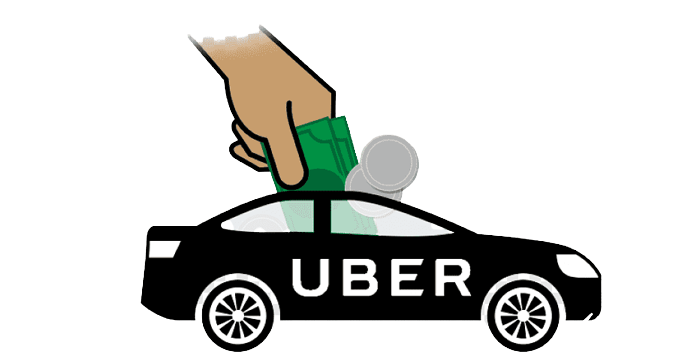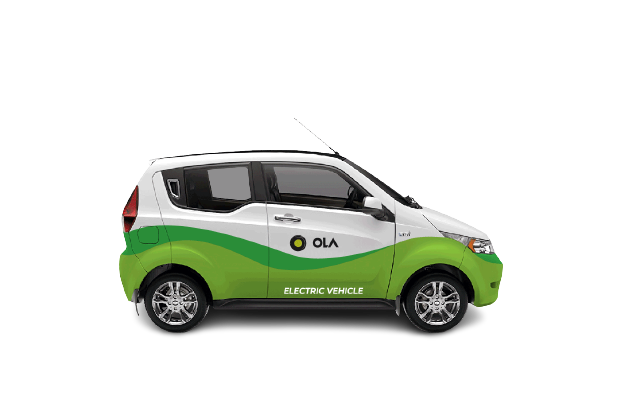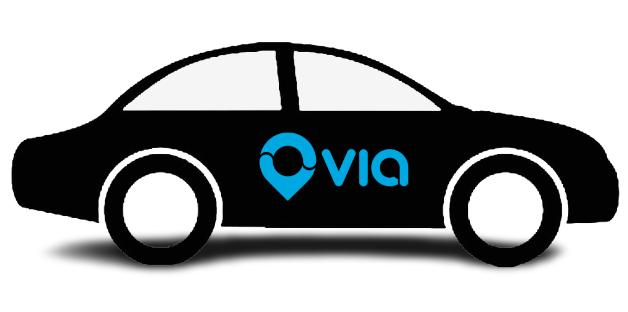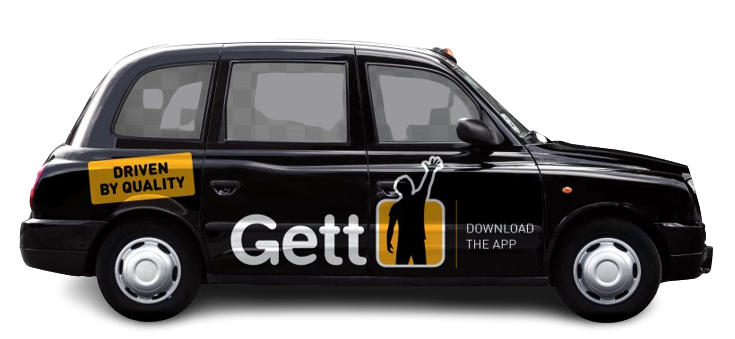The rise of ridesharing apps has forever changed how people travel and commute. It has brought unprecedented ease, enabling people to get a ride at their doorstep with a simple click of a button. In this blog, we are going to discuss the popular 10 best ridesharing apps that are in demand in 2024.
No wonder the global ridesharing market worth $59.5 billion in 2020 is set to reach $205.83 billion by 2030, growing at a CAGR of 13.2%.
Ridesharing apps provide an app-based platform for taxi drivers and travelers to locate each other easily. If two people in the same area wish to travel to destinations close to each other, they can hire a taxi together. Ridesharing is excellent as it allows travelers to split the fares while putting less pressure on the environment. Besides, it helps to reduce traffic congestion, allowing two or more people to travel in the same car.
Now, if you are a start-up planning to create your ridesharing app service, you must take a peek at the leading ride-hailing services in the market. Learning about the top apps can help you decipher their strategies to become successful.
In the next segment, we will look at the top 10 ridesharing apps that provide users with the best car riding services.
Best Ridesharing Mobile Apps to Try in Daily Life
We have created a roundup of the best ridesharing mobile apps that deliver excellent services worldwide. These apps come with various innovative features such as fare-split, easy payment options, liability insurance, etc., to make your travel smoother. Let’s get to know these great rideshare apps you can use daily without further ado.
1. Uber- The Rideshare Giant

Uber has become synonymous with taxis. With over 110 million worldwide users, the top-rated app has disrupted the transportation industry with its ridesharing model.
The app is developed in a way that offers immense user convenience. The easy-to-use app provides multiple payment options for credit and cash in a few selected cities. The pricing model of Uber is exceptionally competitive, and it offers a low-fare opportunity for a certain period during the day.
To use Uber, you can simply open the app, enter the desired destination, and the app will match you with the nearest driver based on your location. After being matched, the app will share the driver’s details along with their live location and ETA.
Best Features of Uber (The most popular Ridesharing App)
· Scheduling rides in advance
· Option to split the fare
· Multiple drop-off points for a group of riders
· Availability of multiple payment options
· Uber assist services for disabled riders
2. Lyft- Friend with a Vehicle

Next on the list is Lyft, another popular rideshare app that operates in hundreds of places across North America. The company guarantees to deliver a seamless and warm rider experience and calls itself ‘your friend with a car.’
Before the pandemic, it was common for Lyft passengers to hop in the taxi’s front seat and chat with the drivers while on their ride to their desired destination. For this reason, apps such as Lyft are worth studying and analyzing as they have taken a nice approach different from Uber.
The on-demand best ridesharing app observes demand-based pricing during peak hours. Regarding its working, it is pretty similar to Uber. The rider only has to request a ride by entering their location details. The app will automatically match you with a driver and allow you to track the live location of the driver.
Lyft is a very secure app as it ensures extensive background check-ups for all the onboarded Lyft drivers.
Best Features of Lyft
· One tap ride option for quick rider requests
· Comprehensive background checks of the drivers
· Shared-saver rides for excellent discounts
· Rideshare app for commuting long distances
· Liability insurance offered by the company
3. Ola- Best Indian Multinational Ridesharing Company

Ola is an India-based cab service and ridesharing company that operates in over 250 cities in India. Additionally, the company offers brilliant taxi services in regions across Australia, the UK, New Zealand, and more.
Ola has become a popular ridesharing service as it offers various travel options to riders at varying price points. Apart from ridesharing, users can also rent a car or hire a taxi driver for a long journey.
Recently, the company launched its electric vehicle arm called Ola Electric. This brilliant strategy has gained enough traction in its early stages and propelled the company’s reputation as an environmentally-conscious service.
Best Features of Ola (Top Carpooling App)
· A vast range of ride options
· Ability to schedule rides in advance
· Multiple payment options, including cashless
· Complete roadside assistance and access to safety features such as a panic button
· Daily payments for the drivers
· Option for drivers to lease a car
4. BlaBlaCar- Share your Ride

BlaBlaCar is one of the top ridesharing apps with a slightly different business model. The app enables people who wish to carpool to commute together and split the journey’s fare.
With the app, anyone who wants to carpool can list their car on the app. After identifying the route, anyone who wants to travel the same route can book a ride and commute together. The BlaBlaCar company earns a 12% commission on every booking made through the app.
Best Features of BlaBlaCar
· Safe, affordable, and less commercial
· Riders can book a seat even at the last minute
· Option for choosing a women-only ride
· Drivers can choose who rides with them
5. Careem- Top Transport-Sharing App in the Middle East & North African Market

Careem is among the most popular ride-sharing apps in the North African and Middle East markets. Uber acquired the Dubai-based ridesharing service in 2019 for $3.1 billion. But despite the acquisition, both companies operate independently.
Careem has evolved from a simple ridesharing app to the region’s super app. It delivers various services such as food delivery, grocery shopping, bike rentals, and much more. The app is easy to use and enables the riders to fulfill their everyday needs, i.e., book a cab or order food delivery from a single platform.
Best Features of Careem
· Offers excellent rewards to the riders
· Supports cashless payments using Careem Pay
· Provides excellent support to drivers and immense work flexibility
6. GoJek- More Than Just a Ridesharing App

GoJek is one of the best ridesharing apps that operates in 5 countries in Southeast Asia, namely Indonesia, Vietnam, Thailand, Philippines, and Singapore. It is called a super app, as it integrates over 20 services into one platform.
In other words, the GoJek platform combines 20 different apps that enable its users to perform various tasks. Right from booking a ridesharing cab to ordering food delivery and even helping customers move heavy goods, GoJek does it all. It provides 20 services in domains like transport, logistics, food delivery, business, and entertainment.
Best Features of GoJek
· Offers to help run errands, move goods, deliver food, etc.
· Provides quick and easy payment options
· Offers drivers free skill training and several employment benefits
7. GetAround- P2P Carsharing Service

GetAround is one of the most significant peer-to-peer marketplaces that enable people to easily rent a car without dealing with car rental agencies. It is the world’s biggest connected car-sharing platform that automatically connects riders with those who wish to rent.
The app’s working is pretty straightforward. The vehicle owner can charge a specific fee for a specific time. Also, the app charges a 40% commission on all bookings made via the app.
Best Features of GetAround
· Easy to join the renting network without any membership fee
· Hourly rentals enable riders to pay only for the time they need
· All vehicles and drivers are covered by insurance
· Round-the-clock customer support assistance for the renters
8. Via- Quick, Small, and Proud

Another one of the leading ridesharing apps is Via which is operational in almost 20 countries. The app services six countries under its name and has partnered with local transport companies in the remaining regions.
Via works a little differently as compared to other rideshare apps. When riders book a ride to a specific destination, they are instantly connected to other riders traveling along the same route. Thus, travelers can easily carpool and help customers save money. One of the best aspects of Via is that it operates 24 hours a day and seven days a week.
Best Features of Via
· Offers ride to multiple passengers traveling in the same direction
· Allows riders to share rides with others
· Affordable pricing model
· Corner-to-corner pickup service for immense user convenience
· Drivers can avail of excellent bonuses upon referring other drivers
9. Gett- Israel-Based Cab Service

Formerly known as GetTaxi, Gett is a popular Israel-based ridesharing app. It serves over 100 cities across Europe, such as London, Tel Aviv, and Moscow. In the USA, it only operates in New York via its partner company, Juno.
Gett is highly popular among everyday commuters as it offers an affordable pricing model. As per the company’s pricing strategy, there is no surge pricing for the customers, even during busy hours. This makes it one of the cheapest rideshare solutions out there. Also, Gett pays its drivers a higher salary than all its competitors.
Best Features of Gett
· Affordable pricing model
· Allows up to two weeks of booking
· In-app tipping allowed
10. Scoop- Best Ride Share Service Apps

Scoop is one of the highly recommended ridesharing apps that is specially designed for office-goers. It offers a convenient carpooling option where the riders can request a carpool one night before and be paired with a suitable rider for the next morning’s commute.
The riders can use the app for carpooling on an as-required basis. They can decide whether it is a single trip or a series of carpool rides. The app’s pricing model is quite affordable. Also, the app’s developers perform routine maintenance to ensure the app runs as smoothly as possible.
Best Features of Scoop
· Easy-to-use app with an intuitive UI design
· Excellent to connect with coworkers
· Allows multiple carpooling options
What is Ride Sharing App?
Ridesharing apps provide a unified platform for drivers and fellow riders to find each other. When two or more riders are looking to travel to the same destination, they can use the app to hire a cab together and split the journey’s fare. This is an excellent way to save the rider’s money and conserve the environment.
In today’s time, people have become highly conscious of the environment they live in. with ridesharing; people can cut their carbon footprint and reduce it to half or sometimes even lesser. Besides, ridesharing helps to decrease traffic congestion, enabling several riders to travel in the same vehicle.
How Does Ride Sharing App Work?
Ridesharing apps connect riders who need a one-way ride with drivers available in the area at a given time.
In most ridesharing apps, the vehicle drivers are self-employed and use their vehicles to offer rides. Thus, people looking for an additional source of income can sign up with the app and offer services during their flexible hours.
Moving on, most of the ridesharing apps operate in a similar way which is as follows:
1. Request a ride
Once a rider has signed up with the app, they can enter their current location and the destination they want to reach. Based on their input, they may be able to see several alternatives and choose any one.
2. Booking verification
Once the rider inputs his request, a nearby driver gets a notification. The driver can either accept or deny the request. If they accept it, the rider will receive a notification and the driver’s estimated arrival time.
3. Payments and ratings
Every app offers different payment options, which must be made at the end of the journey. The riders can also provide feedback on their journey.
Ride-hailing vs. ridesharing vs. carpooling – What’s the Difference?
A lot of passengers confuse the terms ride-hailing, ride-sharing, and carpooling. However, there are some critical distinctions in these terms, which are pointed out below:
Ride-hailing
Ride-hailing is requesting a taxi driver to help you commute to your desired location. The drivers are hired by a specific business and receive their payments directly from them.
The most classic examples of ride-hailing services are Uber, Ola, and Lyft.
Ride-sharing
A ride-sharing service connects passengers with freelance drivers who work on their schedules. Such a service coordinates shared rides between two or more passengers commuting to the same destination. This enables riders to save money while helping freelancer drivers e a quick buck during their free hours.
Carpooling
Carpooling is an arrangement between passengers who travel to the exact location daily, such as their office, in a shared vehicle. With this system, the journey cost is equally split among all the passengers. Typically, regions with limited public transport facilities can benefit from such an arrangement.
How to Build a Ride-Sharing Mobile App?
Developing a ridesharing app is a long and slightly complex project. Below, there is an overview of the development process that can help you get an idea about how to launch your own app.
1. Analyze the competitive landscape
This is the starting point for every entrepreneur looking to develop their ridesharing application. Looking at the market, the competitors, their strategies, their unique value propositions, etc., can help you make informed business decisions.
2. Identify your product’s UVP
You may think that Uber is a brilliant ridesharing app available on the market, which may make you feel tempted to replicate its business model. However, that will seldom do you any good. Remember, to be successful; you need to offer something unique and valuable to your potential audience. In other words, your solution must have a unique value proposition that makes it stand out from the competition.
Analyzing your target customers, their pain points, and your direct competitors can help you see the gaps your product can fill.
3. Decide on the monetization strategy
A business can only grow if it is monetized well. So before you start building your ridesharing app, you must determine its monetization strategy. There are several ways to monetize an app. The most commonly used techniques that work well for ridesharing apps include advertising, commission fees, and partnering with other transport companies.
4. Choosing a development team
The next step is to select a development team. You can either have an in-house team or outsource the development project to a third-party service provider. This decision will depend on time, location, budget, etc.
5. Developing and launching an MVP
When creating a new ridesharing app, it is advisable to begin with a minimum viable product (MVP). This is a smart move, both in terms of money and resources. You can release an MVP with the essential app features and functionalities and gather the user’s feedback. Once your solution hits the market, you can build a full-fledged version.
6. Gathering customer feedback
When the product is launched, you must get on to collecting as much customer feedback as possible. Based on this feedback, you can determine which aspects of the app require changes. Consequently, you can change the business and technical sides and release a new app version.
How Much Does It Cost to Develop a Ridesharing Mobile App?
Developing a ridesharing app is a costly process that involves taking care of several aspects. Below are some of the most critical features that hugely influence development costs:
Development origin
The development origin refers to the location of your development company. And this depends on whether you hire an in-house development team or outsource the project.
Building a development team in the USA or London will be much more expensive than outsourcing your development requirements to a company in Eastern Europe.
The complexity level of the app
The mobile app’s complexity level depends on the number of integrated features and technologies used. The more complex the app is, the higher the cost will be.
Design requirements
The design of your app will make the first impression on the users. This also includes the app’s speed and functionalities. The development cost will automatically surge if you opt for a very fancy design.
That being said, it is advisable not to spend much money on designing during the MVP stage.
Support and maintenance
Most of the reputed Android and IOS applications require technical support after launch. This is because there is always something to work on. Depending on your after-launch support requirements, you can understand the development cost.




